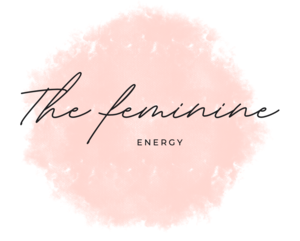Many women live disconnected from their own bodies and their monthly hormonal cycles.
In a society that praises masculine energy and getting things done, results and achievements, many women living in survival mode learn to ignore their monthly cycles and how they feel, and just try to live like men: always in doing mode all month long, in a straight line.
But women don’t have the amount of testosterone men have and also their bodies are not a “straight line”, they have monthly hormonal cycles and changes that need to be listened to.
The consequences of not listening and honouring it is living a life disconnected from themselves, exhausted, frustrated, and very often, with health issues.
To many women their only connection to their womb is once a month when they have their period or when they are pregnant. Other than that, is like nothing more is happening and that couldn’t be further from the truth.
In this article we are telling you how to better understand your monthly hormonal cycles and how to start to listening to your body and start follow your feminine nature, in a true womb awakening, that will lead you to a softer and more aligned life.
Understanding and following your monthly hormonal cycles can be a transformative experience, allowing you to harness the natural rhythms of your body to enhance your well-being.
By tuning into these cycles, you can optimize your health, productivity, and overall quality of life.
Here’s how you can align with your hormonal changes throughout the month:
Understanding the Menstrual Cycle
The menstrual cycle typically lasts around 28 days, though it can vary from 21 to 35 days for some women. It consists of four main phases: the menstrual phase, the follicular phase, the ovulatory phase, and the luteal phase.
Each phase is characterized by different hormonal fluctuations that affect your physical and emotional state.
The Four Phases and How to Align with Them
1. Menstrual Phase (Days 1-5)
- What Happens: This phase begins on the first day of your period and lasts until bleeding stops. Hormone levels, including estrogen and progesterone, are at their lowest.
How to Align:
- Rest and Reflect: Your energy levels may be low, so prioritize rest and self-care. Journaling and meditative practices can be beneficial.
- Gentle Exercise: Engage in light activities such as yoga or walking.
- Nourishing Foods: Focus on iron-rich foods and hydration to replenish lost nutrients.
2. Follicular Phase (Days 6-14)
- What Happens: After menstruation, the body starts preparing for ovulation. Estrogen levels rise, leading to increased energy and improved mood.
- How to Align:
- Plan and Initiate: Use this phase for goal-setting and initiating new projects. Your cognitive abilities are at their peak.
- Intense Workouts: Engage in higher-intensity exercises such as running or strength training.
- Balanced Diet: Incorporate plenty of fresh fruits, vegetables, and lean proteins to support your energy needs.
3. Ovulatory Phase (Days 15-17)
- What Happens: Ovulation occurs around the midpoint of your cycle, with a surge in luteinizing hormone (LH) and peak estrogen levels. This is the time when you are most fertile.
- How to Align:
- Social and Connect: Your communication skills and sociability are heightened. Schedule important meetings or social events.
- Creative Activities: Engage in creative endeavors as your creativity is at its highest.
- Light and Energizing Foods: Opt for light, energizing meals that include whole grains and healthy fats.
4. Luteal Phase (Days 18-28)
- What Happens: After ovulation, progesterone levels rise, preparing the body for a potential pregnancy. If pregnancy does not occur, hormone levels drop, leading to the onset of menstruation.
- How to Align:
- Complete and Organize: Focus on completing tasks and organizing your space. Your attention to detail is enhanced.
- Moderate Exercise: Continue with moderate exercise routines to manage mood swings and bloating.
- Comfort Foods: Incorporate magnesium-rich foods like dark chocolate and leafy greens to ease PMS symptoms.
Practical Tips for Tracking Your Cycle
- Use a Cycle Tracking App: Apps like Clue, Flo, or MyFLO can help you track your menstrual cycle, predict fertile windows, and monitor symptoms.
- Maintain a Cycle Journal: Keep a journal to note down physical and emotional changes throughout the month. This practice can help you identify patterns and plan accordingly.
- Listen to Your Body: Pay attention to your body’s signals and adjust your lifestyle as needed. If you feel tired, rest. If you feel energetic, take on new challenges.
- Consult with a Healthcare Provider: If you experience irregular cycles or severe symptoms, seek advice from a healthcare professional to rule out any underlying conditions.
Benefits of Following Your Hormonal Cycles
- Enhanced Productivity: Aligning tasks with your energy levels can lead to increased efficiency and satisfaction.
- Improved Health: By listening to your body and providing it with what it needs at each phase, you support overall well-being.
- Better Emotional Balance: Understanding the hormonal influences on your mood can help you manage emotions more effectively.
By embracing and following your hormonal cycles, you can live more harmoniously with your body’s natural rhythms, leading to a healthier, more balanced, and fulfilling life.
Also, as you learn to listen to, honour and follow your natural feminine cycles, you’ll also start to only accept in your life people and situations who honour it too.
No more people or situations who push you into a masculine energy all month long and want you to ignore your feminine body.
Start today, and discover the power of living in sync with your cycle.
Click here if you want to know how to navigate your feminine energy during menopause.






